Manimahesh Yatra: A Divine Pilgrimage in the Lap of the Himalayas
Imagine embarking on a spiritual journey that takes you to the tranquil shores of a sacred lake nestled amidst the majestic Himalayas. Welcome to Manimahesh Yatra, a revered pilgrimage that attracts thousands of devotees each year. In this article, we will delve into the significance of Manimahesh Yatra, the mythological importance of Manimahesh Lake, and the planning involved in this awe-inspiring adventure.
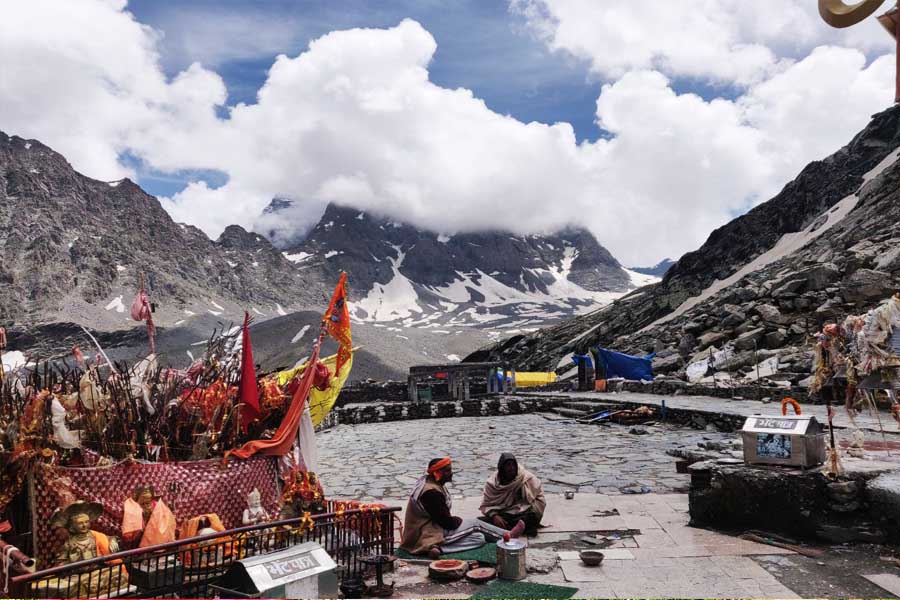
Introduction
Manimahesh Yatra, also known as the “Kailash of Himachal Pradesh,” is a pilgrimage to the holy Manimahesh Lake, located in the Pir Panjal Range of the Himalayas. Situated at an altitude of 4,080 meters, this divine destination holds immense religious and natural significance.
- Suggested Tour: Manimahesh Kailash Trek
The Significance of Manimahesh Yatra
The Manimahesh Yatra holds a special place in the hearts of devotees who believe that a visit to this sacred lake washes away their sins and brings them closer to Lord Shiva. The journey is a test of faith and devotion, attracting both devout Hindus and adventure seekers alike.
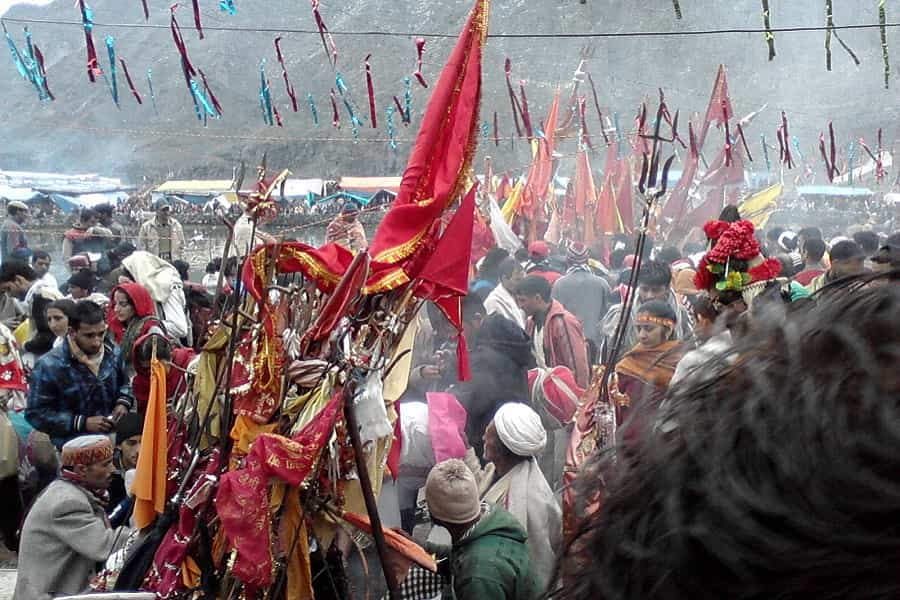
Mythological Importance of Manimahesh Lake
According to Hindu mythology, Manimahesh Lake is believed to be the abode of Lord Shiva. Legends narrate that Lord Shiva performed penance at this very spot, making it a revered site for pilgrims. The reflection of Mount Kailash, also known as Manimahesh Kailash, in the tranquil waters of the lake adds to its mystical allure.
Planning Your Manimahesh Yatra
Choosing the Right Time
The Manimahesh Yatra takes place during the auspicious period of Shravan, which usually falls between July and August. It is crucial to consider the weather conditions and the accessibility of the route before embarking on this spiritual journey.
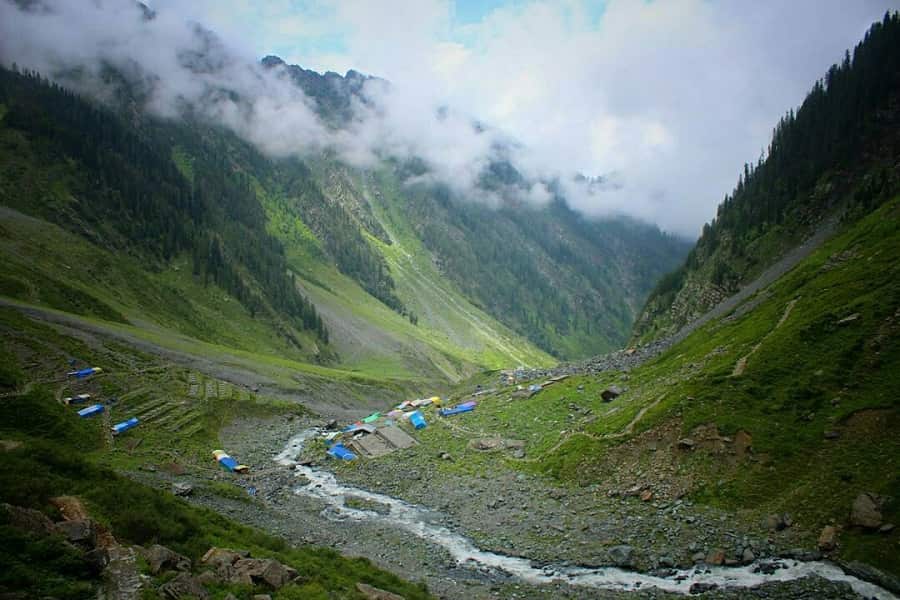
Route and Transportation
To reach Manimahesh Lake, the journey typically begins from Bharmour, a small town in the Chamba district of Himachal Pradesh. From Bharmour, pilgrims embark on a trek of approximately 14 kilometers to reach the sacred lake. The trail offers breathtaking views of snow-capped peaks, lush green meadows, and cascading waterfalls.
Accommodation Options
During the yatra, it is essential to plan your accommodation in advance. Bharmour offers a range of guesthouses and budget hotels for pilgrims. Additionally, temporary campsites are set up along the trekking route for those seeking a unique camping experience amidst the serene surroundings.
Trekking to Manimahesh Lake
The Holy Journey
As pilgrims begin their trek towards Manimahesh Lake, they immerse themselves in the mystical aura of the Himalayas. The path is adorned with colorful prayer flags fluttering in the breeze, and the sound of chanting fills the air. The spiritual fervor heightens with each step, as devotees undertake this arduous yet rewarding journey.
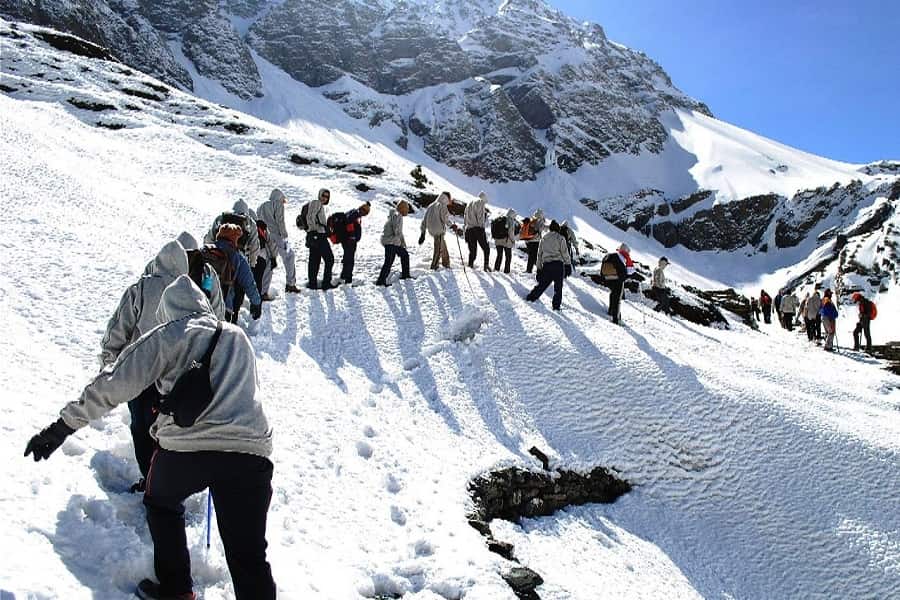
Scenic Beauty Along the Trail
The trek to Manimahesh Lake is not just a spiritual quest but also an opportunity to witness the breathtaking beauty of nature. The trail meanders through dense forests, alpine meadows adorned with wildflowers, and gushing streams. The grandeur of the snow-clad peaks serves as a constant reminder of the divine presence that surrounds the pilgrims.
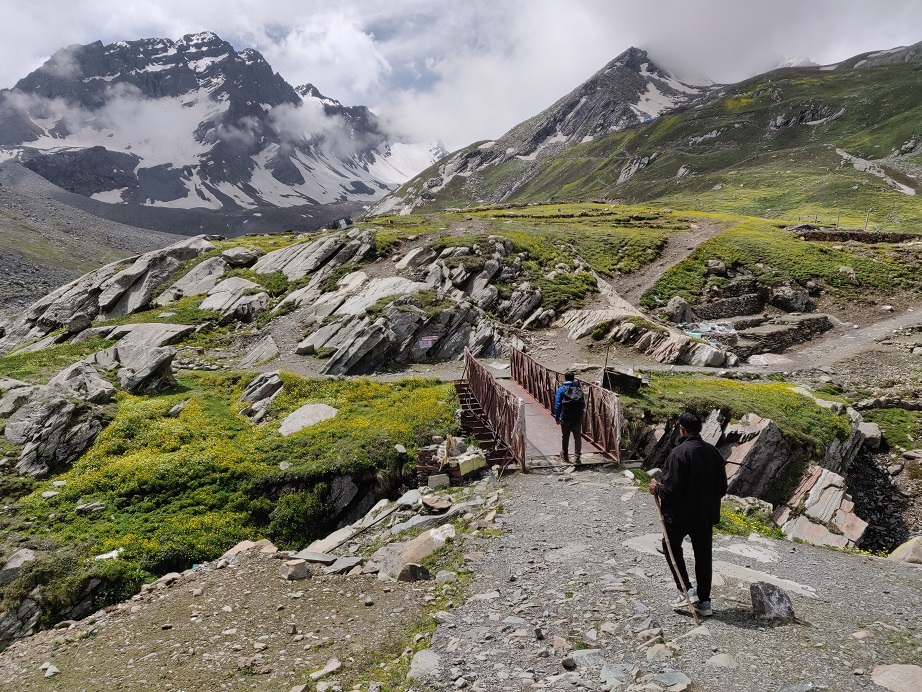
Rituals and Beliefs at Manimahesh Lake
Bathing in the Sacred Waters
Upon reaching Manimahesh Lake, pilgrims participate in a sacred ritual known as “Snan” or bathing. It is believed that taking a dip in the pristine waters of the lake cleanses the soul and purifies the mind. Devotees offer prayers and seek blessings from Lord Shiva, hoping for spiritual enlightenment and liberation.

Worship and Offerings
Devotees perform elaborate ceremonies and offer prayers at the Manimahesh Temple, situated near the lake. The rhythmic chants, the fragrance of incense, and the sight of devotees immersed in devotion create an atmosphere of divine grace. Flowers, sweets, and other symbolic offerings are presented to seek blessings and express gratitude.
Challenges and Precautions
Altitude Sickness
Given the high altitude of the region, altitude sickness can pose a challenge for pilgrims. It is essential to acclimatize properly and stay hydrated throughout the journey. Consulting a healthcare professional and carrying necessary medications is advisable to ensure a safe and comfortable yatra.
Weather Conditions
The weather in the Himalayas can be unpredictable. Sudden rain or snowfall can make the trekking route challenging. It is crucial to keep an eye on weather forecasts and be prepared with appropriate clothing and gear. Following the instructions of experienced guides and local authorities is vital for a successful and secure yatra.
Safety Measures
While undertaking the Manimahesh Yatra, it is essential to prioritize safety. Following the designated trail, staying with the group, and avoiding shortcuts are crucial precautions. Carrying essentials like a first aid kit, sufficient water, and energy-rich snacks is important. Additionally, maintaining a moderate pace and not exerting oneself excessively ensures a smooth and enjoyable journey.
Captivating Surroundings of Manimahesh
Exploring Chamba Valley
The Manimahesh Yatra offers a chance to explore the enchanting Chamba Valley. Known for its picturesque landscapes and rich cultural heritage, Chamba Valley is a treasure trove for travelers. After completing the yatra, pilgrims can take some time to visit the ancient temples, palaces, and traditional markets in Chamba town. The intricate architecture and the vibrant festivities of the region provide a glimpse into its glorious past.
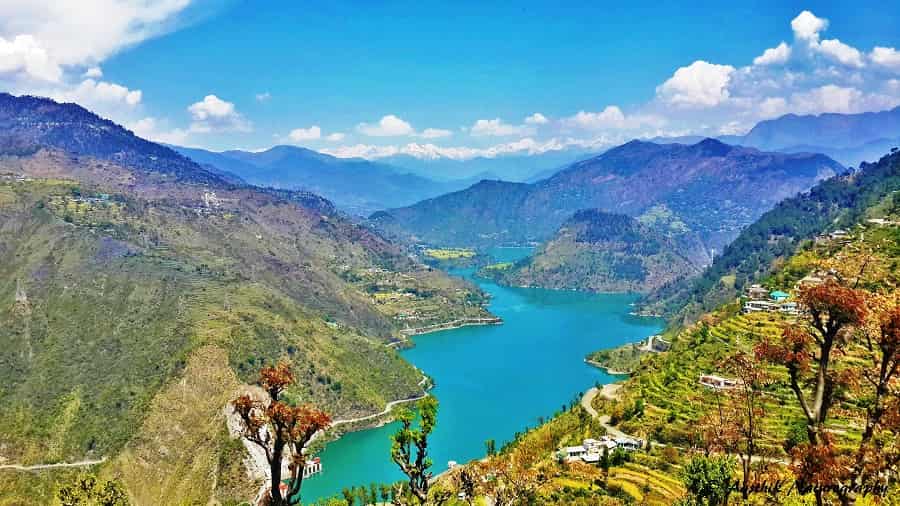
Visiting Bharmour
Bharmour, the starting point of the Manimahesh Yatra, holds its own charm and historical significance. Pilgrims can explore the ancient temples dedicated to Lord Shiva and other deities. The Chaurasi Temple complex, with its 84 shrines, is a prominent attraction. Bharmour also serves as a gateway to various trekking trails, offering opportunities for adventure enthusiasts to indulge in their passion.
Conclusion
Manimahesh Yatra is not just a physical journey but a transformative experience that touches the depths of one’s soul. The divine aura, the awe-inspiring landscapes, and the devotion-filled atmosphere create an atmosphere of spiritual awakening. As pilgrims return from this sacred pilgrimage, they carry with them a renewed sense of faith, inner peace, and cherished memories that will last a lifetime.
FAQs
FAQ 1: How long does the Manimahesh Yatra take?
The duration of the yatra depends on various factors such as the chosen route, individual fitness level, and weather conditions. On average, it takes about 3-4 days to complete the trek to Manimahesh Lake and return to Bharmour.
FAQ 2: Is there any age restriction for the yatra?
There is no specific age restriction for the Manimahesh Yatra. However, considering the challenging terrain and high altitude, it is advisable for individuals to be in good health and consult a healthcare professional before undertaking the journey, especially for elderly people and children.
FAQ 3: Are there any medical facilities available along the route?
Basic medical facilities are available in Bharmour, but the availability of medical aid along the trekking route may be limited. It is recommended to carry a first aid kit and any necessary medications. In case of emergencies, it is advisable to seek help from local authorities or fellow trekkers.
FAQ 4: Can foreigners undertake the Manimahesh Yatra?
Yes, foreigners are welcome to undertake the Manimahesh Yatra. However, they are required to obtain the necessary permits and follow the guidelines set by the local authorities. It is advisable to check with the appropriate government agencies or consult a reliable travel agency for up-to-date information and guidance.
FAQ 5: What should I pack for the yatra?
When packing for the Manimahesh Yatra, it is important to consider the weather conditions and the requirements of the trek. Some essential items include warm clothing, comfortable trekking shoes, a waterproof jacket, a hat, sunscreen, sunglasses, a water bottle, energy-rich snacks, a flashlight, and a sturdy backpack. It is also advisable to carry some cash, a map or a guidebook, and necessary identification documents.
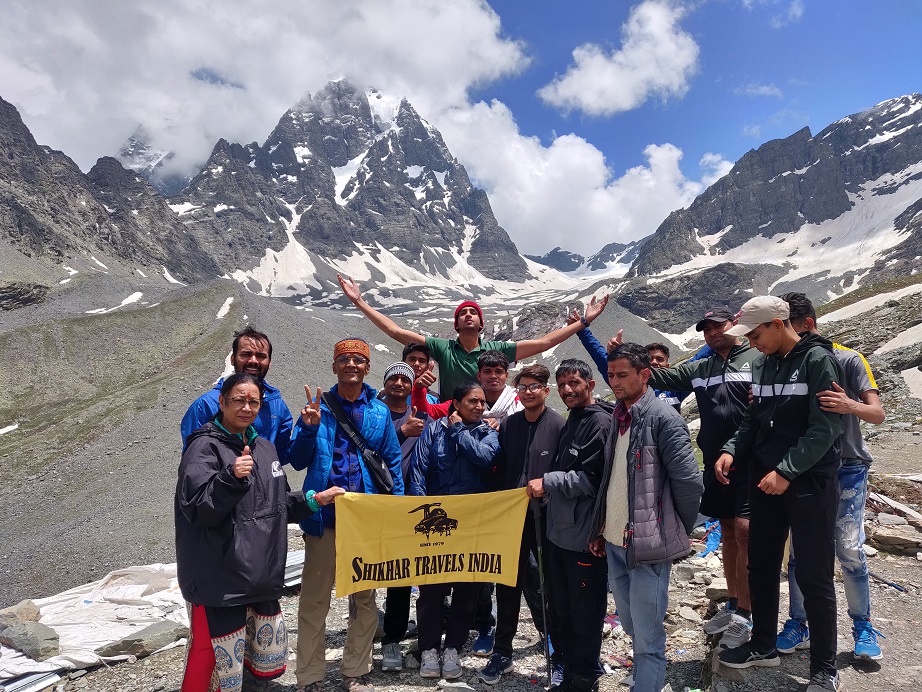
In conclusion, the Manimahesh Yatra is a profound journey that combines spirituality, adventure, and natural beauty. It offers a chance to connect with the divine, witness the awe-inspiring Himalayas, and immerse oneself in the rich culture of the region. So, prepare your soul, lace up your boots, and embark on this unforgettable pilgrimage to the divine abode of Manimahesh Lake.
Children below two years age allowed or not
we don’t recommend it,
Muslims are allowed for manimahesh yatra or not??
Is there any restrictions for muslims??
Everyone is allowed Mam